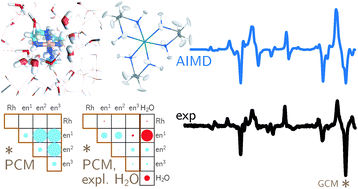-
Symmetry Breaking in Chiral Ionic Liquids Evidenced by Vibrational Optical Activity
P. Oulevey, S. Luber, B. Varnholt and T. Bürgi
Angewandte Chemie International Edition, 55 (39) (2016), p11787-11790


DOI:10.1002/anie.201605792 | unige:87902 | Abstract | Article HTML | Article PDF
Ionic liquids (ILs) are receiving increasing interest for their use in synthetic laboratories and industry. Being composed of charged entities, they show a complex and widely unexplored dynamic behavior. Chiral ionic liquids (CILs) have a high potential as solvents for use in asymmetric synthesis. Chiroptical methods, owing to their sensitivity towards molecular conformation, offer unique possibilities to study the structure of these chiral ionic liquids. Raman optical activity proved particularly useful to study ionic liquids composed of amino acids and the achiral 1-ethyl-3-methylimidazolium counterion. We could substantiate, supported by selected theoretical methods, that the achiral counterion adopts an overall chiral conformation in the presence of chiral amino acid ions. These findings suggest that in the design of chiral ionic liquids for asymmetric synthesis, the structure of the achiral counter ion also has to be carefully considered.

